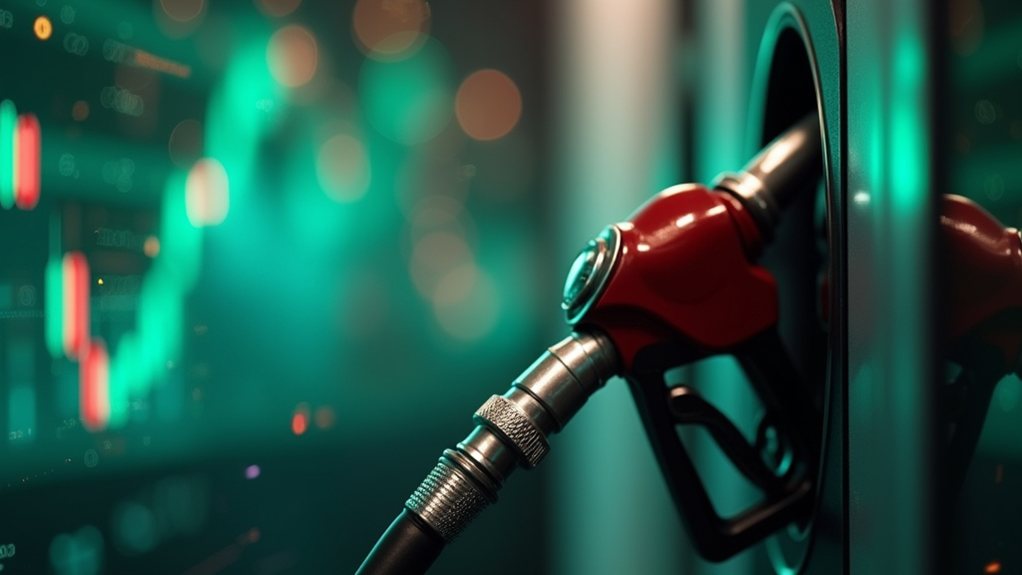Gas fees are payments made to process transactions on blockchains like Ethereum. They compensate validators who handle the transactions and prevent network spam. Fees fluctuate based on network activity, with busier times commanding higher prices. Different blockchains have varying fee structures, with some offering lower costs than others. High fees can discourage small transactions, but new technologies aim to make crypto more affordable for everyday users.

While most people focus on cryptocurrency prices, gas fees play an essential role in how blockchain networks operate. These fees represent the cost users pay to process transactions on a blockchain. Similar to how a car needs gas to run, blockchain transactions need these fees to be completed. Gas fees serve multiple functions: they compensate the validators or miners who process transactions, prevent spam attacks, and guarantee efficient use of network resources.
Gas fees aren't fixed amounts. They fluctuate based on network activity and demand. When many people use a blockchain at once, fees rise as users compete to have their transactions processed quickly. This is especially true during market volatility or when popular applications draw many users. The time of day can also affect fees, with certain hours showing consistently higher costs. Setting an appropriate gas limit is crucial to ensure transaction completion without overpaying.
Gas fees surge during peak usage, with prices climbing as users rush to process transactions during busy periods or market swings.
On Ethereum, the world's second-largest blockchain, gas fees use a specific calculation method. Users pay a base fee (determined by network demand) plus a priority fee (optional tip to miners). These fees are measured in "gwei," a tiny fraction of Ethereum's cryptocurrency. The complexity of the transaction also matters. Simple transfers cost less than complex interactions with smart contracts, which require more computational power. Gas fees represent the computational effort needed for executing various operations on the blockchain.
Different blockchains handle fees in various ways. Ethereum is known for sometimes high and unpredictable fees. Binance Smart Chain offers lower fees but sacrifices some decentralization. Solana provides ultra-low fees with high transaction speed. Polygon and other "Layer 2" solutions reduce costs by building on top of existing blockchains. Polygon specifically enables multi-chain framework capabilities that significantly lower transaction costs while maintaining Ethereum's security benefits. Cardano aims for more predictable fee structures.
Gas fees notably impact how people use cryptocurrencies. High fees can discourage small transactions, affecting adoption of decentralized applications. They shape user behavior, with many people waiting for lower-fee periods to make transactions. The challenge of high fees has driven innovation, including the development of scaling technologies to process more transactions at lower costs.
Developers continue working on solutions to the fee problem. Ethereum's upgrade to "Ethereum 2.0" aims to reduce fees through improved efficiency. Sharding, which splits the network into parallel segments, should increase transaction capacity. Meanwhile, competition grows among blockchain platforms to offer the best balance of security, speed, and affordable fees.
The future of gas fees remains tied to blockchain evolution. As networks mature, they'll need to balance fair compensation for validators with accessible costs for users. The winner in this space might be the blockchain that best solves this fundamental challenge: maintaining network security while keeping transactions affordable for everyday users.
Frequently Asked Questions
How Do Gas Fees Differ Between Layer 1 and Layer 2 Networks?
Layer 1 gas fees are typically much higher than Layer 2 fees.
On main networks like Ethereum, users might pay $2-$15 per transaction, sometimes reaching $50+ during busy periods.
Layer 2 networks offer much cheaper alternatives, usually under $1 per transaction.
Networks like Arbitrum charge about $0.25-$1, while Optimism runs $0.30-$1.50.
Both can increase during high network activity.
Can Gas Fees Be Tax-Deductible for Crypto Investors?
Gas fees can be tax-deductible in specific situations. For business crypto activities, these fees may qualify as business expenses.
Investors might add gas fees to their cost basis, potentially reducing capital gains taxes. However, personal crypto transaction fees generally aren't deductible.
The IRS hasn't provided clear guidance on gas fee treatment. Record-keeping remains essential for all crypto transactions.
Many investors consult tax professionals due to the complex regulations.
What Happens When a Transaction Runs Out of Gas?
When a transaction runs out of gas, the operation fails but fees aren't refunded. All changes are reversed, returning the blockchain to its previous state.
The sender still pays for the computational resources used up to that point. If the gas limit is set too low, the transaction won't execute at all.
During network congestion, transactions with insufficient gas are more likely to fail completely.
How Do Hardware Wallets Handle Gas Fee Calculations?
Hardware wallets calculate gas fees by connecting to blockchain networks through software interfaces.
They retrieve current network fee data, estimate required gas for transactions, and calculate total fees. Wallets typically display fee options (slow, average, fast) on their screens for user approval.
Users can see fees in both crypto and regular currency. Many wallets allow manual fee adjustments for advanced users before signing transactions.
Are There Government Regulations Affecting Gas Fee Structures?
Gas fees face various regulatory influences.
The SEC may classify some crypto assets as securities, affecting fee structures. The CFTC oversees crypto derivatives trading fees, while FinCEN requires crypto businesses to register.
State regulations differ widely – New York's BitLicense mandates fee disclosures, while Illinois has proposed caps on transaction fees.
Internationally, the EU's MiCA regulation standardizes rules across member states.
Industry groups like the Blockchain Association advocate for favorable fee policies.










